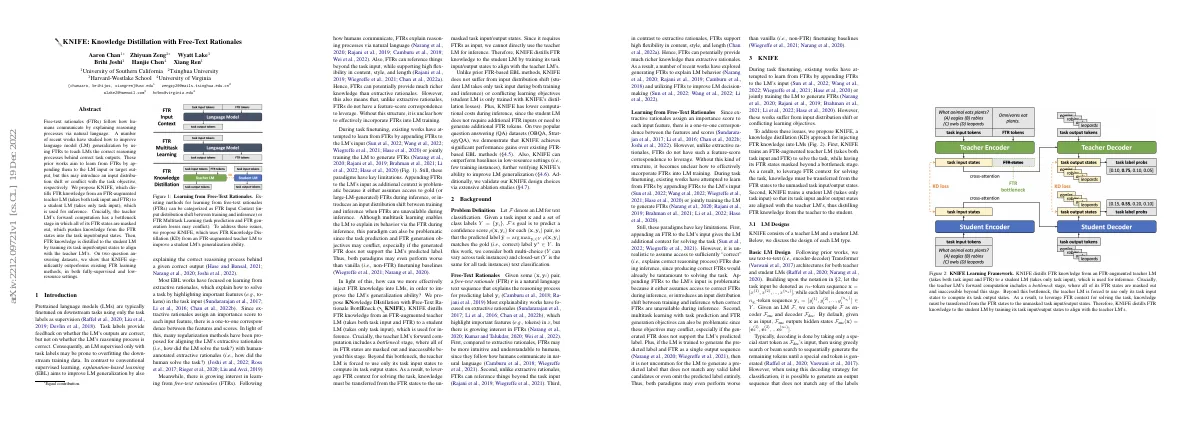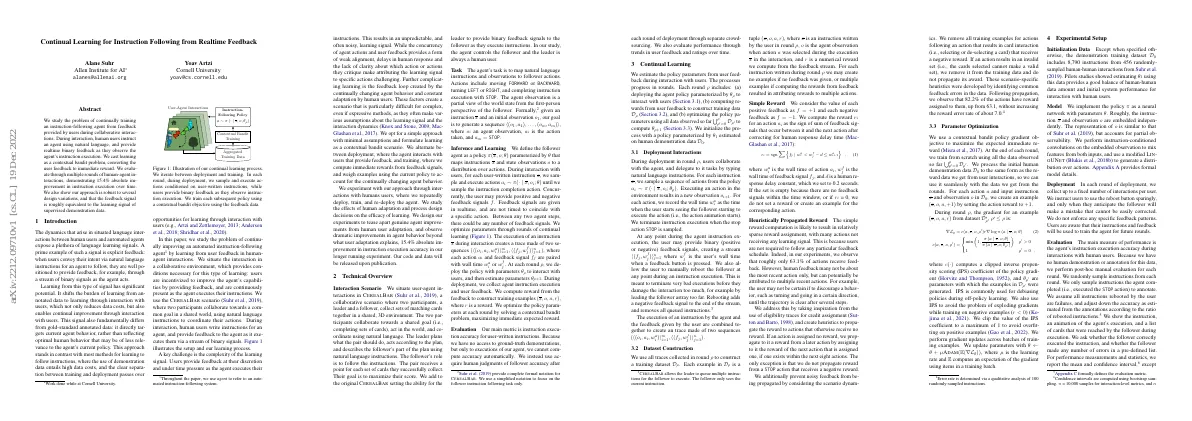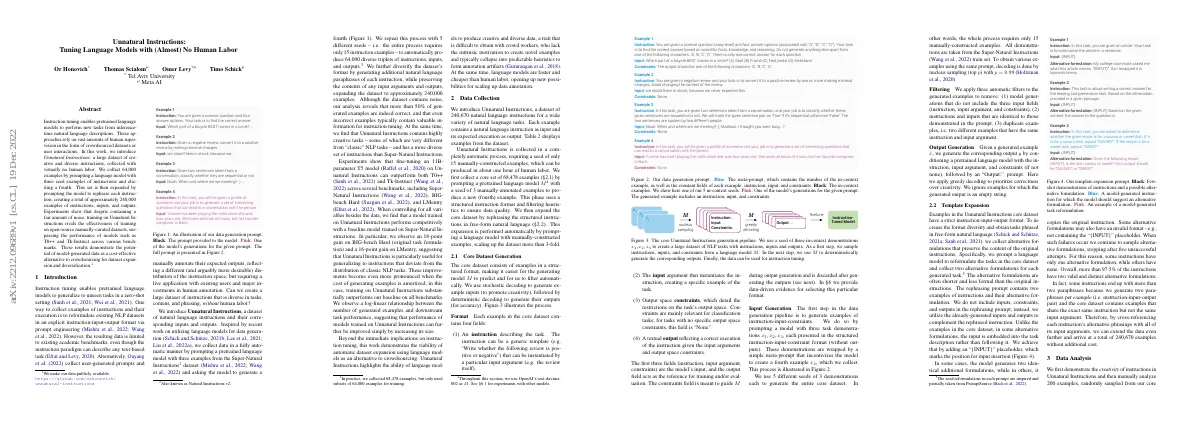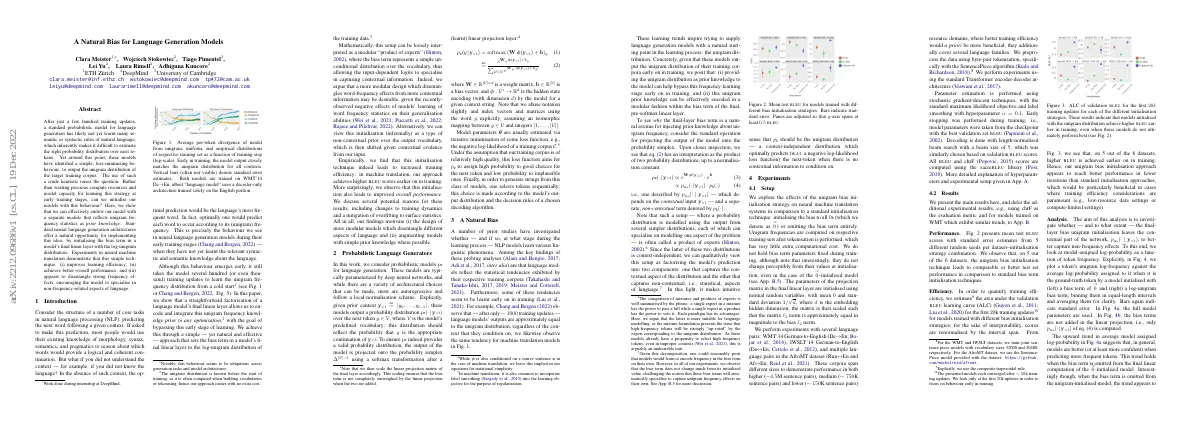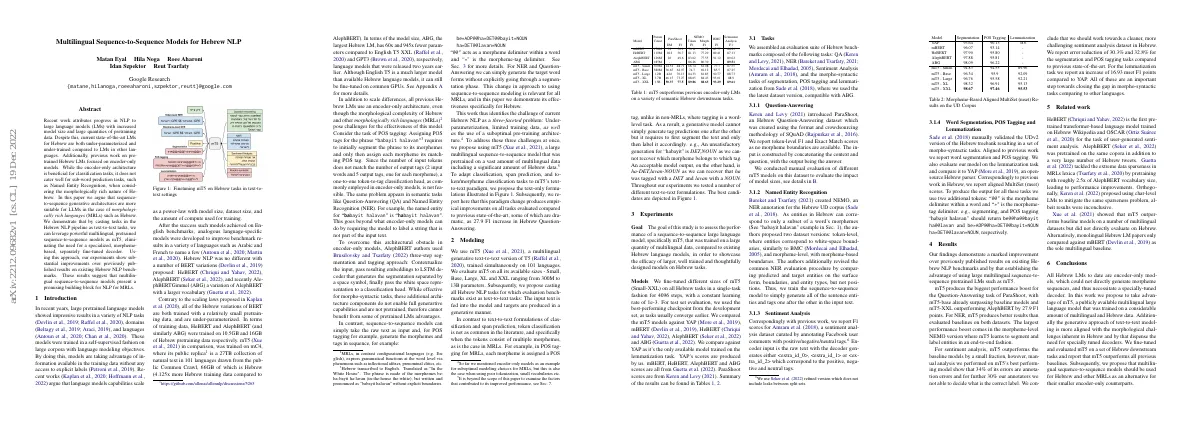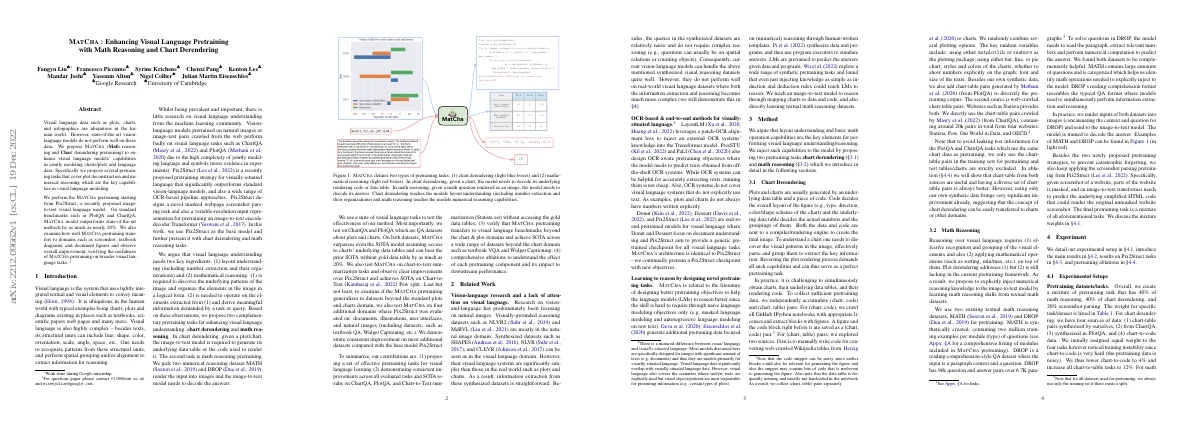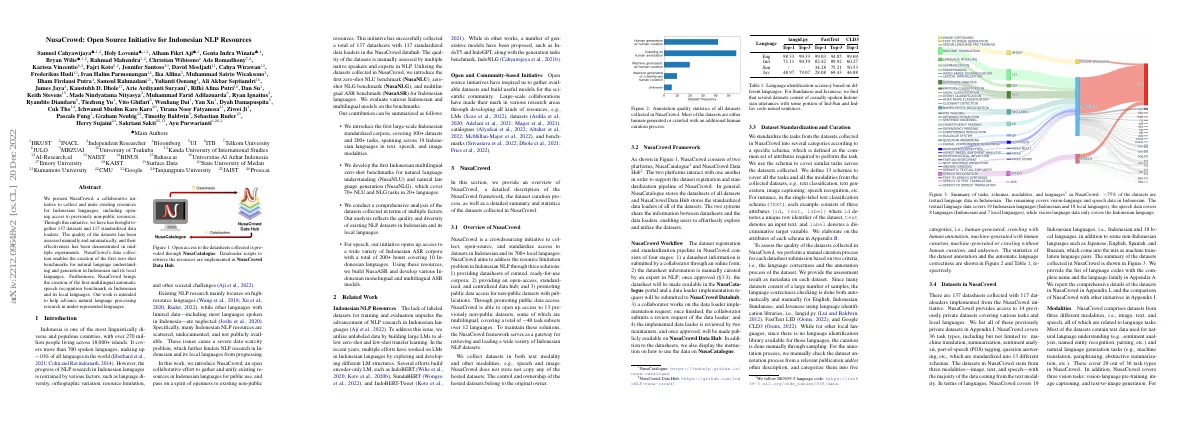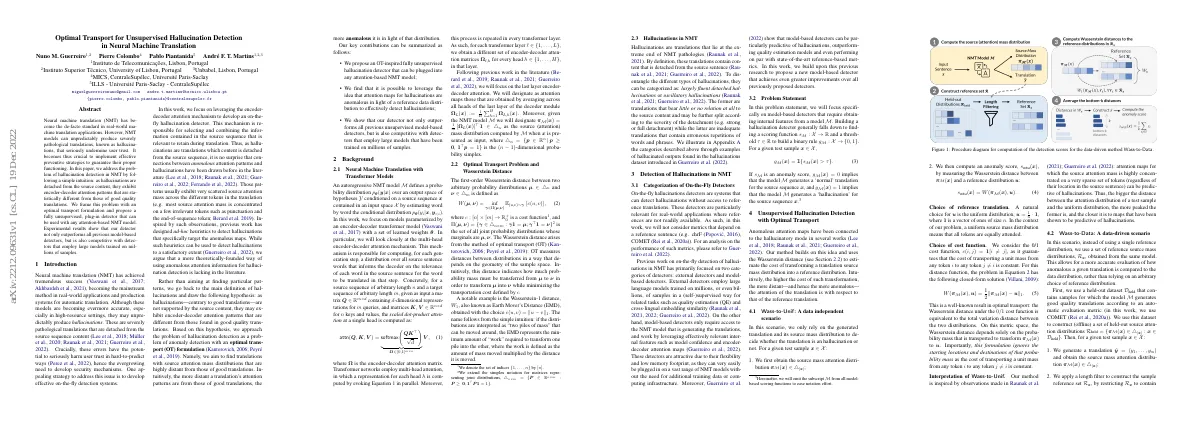Link to paper The full paper is available here.
You can also find the paper on PapersWithCode here.
Abstract Instruction tuning enables language models to perform new tasks from natural language descriptions Unnatural Instructions is a large dataset of creative and diverse instructions, collected with virtually no human labor Unnatural Instructions contains approximately 240,000 examples of instructions, inputs, and outputs Training on Unnatural Instructions rivals the effectiveness of training on open-source manually-curated datasets Paper Content Introduction Instruction tuning enables pretrained language models to generalize to unseen tasks in a zero-shot setting Data can be collected by reformulating existing NLP datasets in an explicit instruction-input-output format Alternatively, user-generated prompts can be collected Process requires only 15 instruction examples to produce 64,000 diverse triplets of instructions, inputs, and outputs More than 50% of generated examples are correct, and incorrect examples contain valuable information Unnatural Instructions contains highly creative tasks and has a more diverse set of instructions than Super-Natural Instructions Experiments show that fine-tuning on Unnatural Instructions outperforms other models on several benchmarks Log-linear relationship between number of generated examples and downstream task performance Language models can produce creative and diverse data faster and cheaper than human labor Data collection Unnatural Instructions is a dataset of 240,670 natural language instructions....
